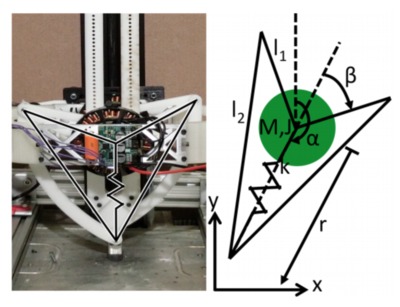
This paper examines the design of a parallel spring-loaded actuated linkage intended for dynamically dexterous legged robotics applications. Targeted at toe placement in the sagittal plane, the mechanism applies two direct-drive brushless dc motors to a symmetric five bar linkage arranged to power free tangential motion and compliant radial motion associated with running, leaping, and related agile locomotion behaviors. Whereas traditional leg design typically decouples the consideration of motor sizing, kinematics and compliance, we examine their conjoined influence on three key characteristics of the legged locomotion cycle: transducing battery energy to body energy during stance; mitigating collision losses upon toe touchdown; and storing and harvesting prior body energy in the spring during stance. This analysis leads to an unconventional design whose “knee” joint rides above the “hip” joint. Experiments demonstrate that the resulting mechanism can deliver more than half again as much kinetic energy to the body (or more than double the kinetic energy if the full workspace is used), and offers a five-fold increase in energy storage and collision efficiency relative to the conventional design.

